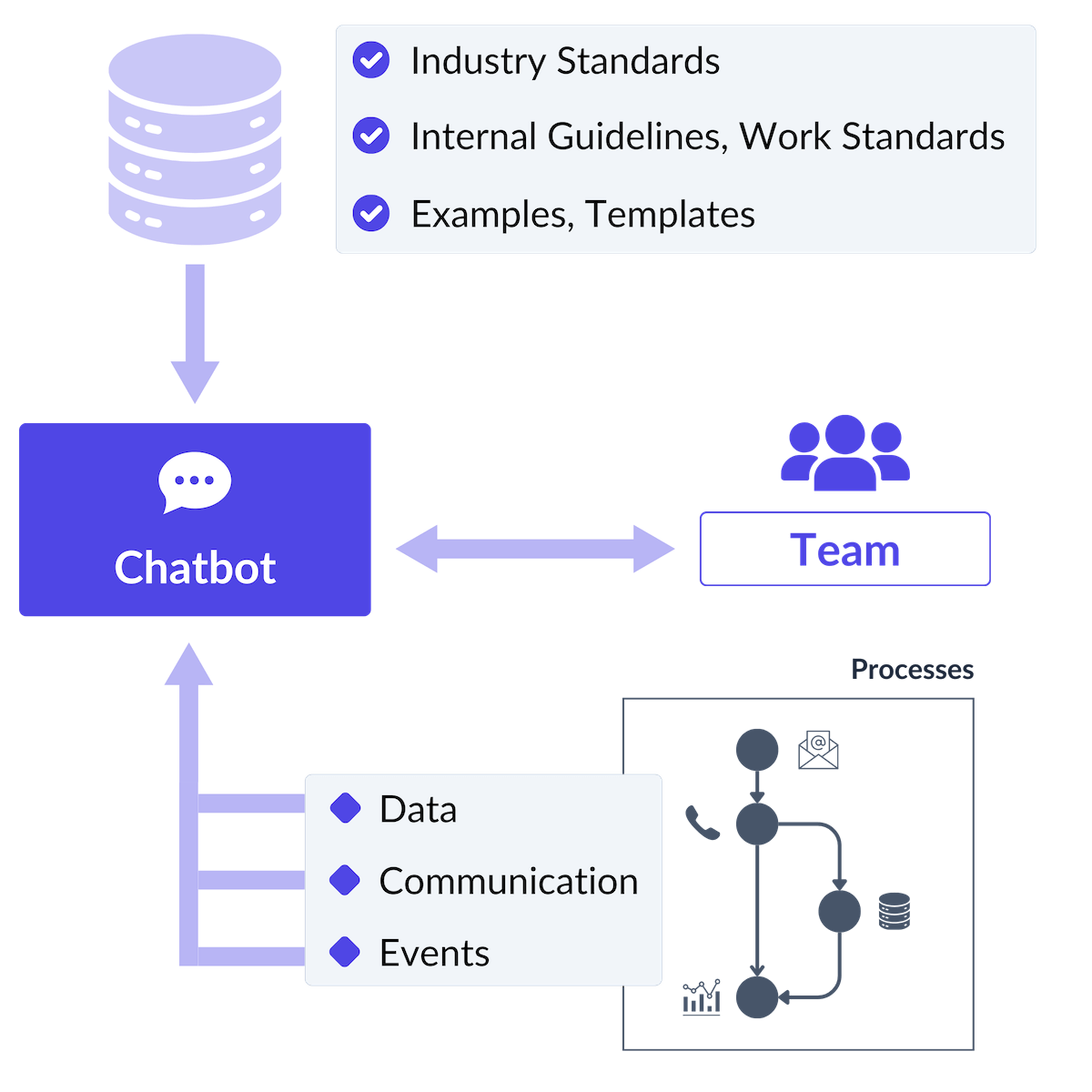Lack of Knowledge Management as a Risk Factor
Knowledge management is a central foundation for robust quality management!
How are we supposed to disseminate quality- and safety-relevant information effectively,
when information storage is chaotic and knowledge is inconsistently distributed across various locations?
The fact is: Without sensible knowledge management, everything becomes more complicated - new employees
take longer to train. In workflows, it's unclear what exactly needs to be considered.
Guidelines are often outdated (
historically grown) and when they are up to date, their universally applicable rules and commands are often difficult to apply to specific processes.
All this quickly takes its toll on quality and efficiency.
Chaotic information storage and inconsistent knowledge are common in many companies.
For quality managers who want to maintain standards and secure a high level of quality and efficiency,
this is an absolute nightmare!
The effective provision of quality- and safety-relevant information becomes a challenge.
Employees quickly feel left behind because they either cannot find the often scattered information or
find it difficult to apply lengthy and complex regulations, standards, and guidelines to their specific situations.
The short-term consequence is low user acceptance and lack of employee engagement.
In the long term, however, chaotic information storage is a breeding ground for quality defects,
inefficient processes, and a frustrated workforce.
Additionally, inadequate compliance can lead to severe financial penalties and significant market disadvantages.
Generative AI as a (Proactive) Quality Advisor
What would a good source of quality- and safety-relevant information look like?
Relevant information should...
- be centralized, not scattered across multiple locations
- be easy to understand and as applicable as possible
- be easy to find
- ideally reach employees even when they are not actively searching for it
Let's look at how generative AI can help us come as close as possible to such an ideal source of knowledge.
Reactive Advice via a Chatbot
The obvious idea is to provide a chatbot. This can serve as a
quality advisorto employees.
Employees can ask the chatbot specific questions. This is particularly interesting when the chatbot can provide not just general knowledge, but also specific quality and safety tips relevant to the current task.
Examples of such questions might be:
What metrics should I as a technical project manager in design capture monthly?
What standards and company standards are relevant when installing emergency exits?
Does this email conform to our company's communication tone? ...
What is the technological ingredient needed to enable such a chatbot?
We first need a large language model that is powerful enough to communicate naturally and freely with users.
This model must be familiar with relevant standards and internal guidelines to provide qualified information.
Proactive Advice through Process Analysis
A chatbot that responds to queries is a good start.
Ideally, however, AI would also proactively contact employees when certain quality-preserving measures become important.
In every process, data and events are generated. New documents, emails, datasets, and metrics arise in the company's IT applications. AI can monitor these and—according to a predefined rule set—inform employees about specific aspects.
Let's be more specific: Suppose in a research project a project documentation must be maintained for relevant stakeholders.
The project manager writes a weekly report. Initially, the weekly report looks good, but as the project continues, the documentation becomes more superficial.
An AI can regularly review the documentation and proactively notify the project manager that the quality of documentation is decreasing and explain why it is important in research projects.

Figure 1: Team and generative AI form a unit. The AI is fed by rules and data from ongoing processes and can thus advise both proactively and reactively.
Approach Strategies
Compared to AI in other areas, we face three challenges in managing quality and safety-relevant knowledge:
The AI Needs Relevant Knowledge in Compliance
For a language model to support our employees in quality, safety, and compliance, we must ensure
it is familiar with all relevant internal guidelines and regulations, as well as external norms and quality standards.
When integrating internal guidelines and regulations, as well as including external frameworks like standards, it is crucial that these are up-to-date
and that relevant changes are learned by the AI.
Thus, the AI must have smart interfaces to internal documents and to the relevant external institutions.
As an AI solution provider, for example, we are a strategic partner of the German Institute for Standardization (DIN) and
work with various standardization institutes across Europe. Based on these experiences, we can provide our customers with comprehensive consulting and solutions in this area.
The AI Must Ensure Data Privacy
Furthermore, we need to consider how we handle data privacy.
For the AI to provide truly helpful tips, it must also be possible to freely discuss topics in the chat,
which naturally contain sensitive data that we want to keep secure. These might include
questions about details in construction and product development or about specific customer cases.
To ensure data privacy for our clients, our approach is to forego cloud-based AIs like ChatGPT
and instead install a modern, open-source language model like Llama3 directly in the client's data center.
Advanced Data Analysis
For the AI to also proactively and event-oriented address employees, continuous
analysis of further data from company processes is necessary. This requires a robust connection of the AI to
documents and databases within the company.
With our AI software KogniLink, we offer a ready platform for this task,
which securely and reliably connects data from various systems to the language model and enables analysis of this data.
Conclusion
Let's recap:
With generative AI, we can efficiently communicate quality and safety-relevant knowledge to employees,
so that they have this information in an easily digestible form and within their respective contexts.
This enables us to efficiently ensure quality in processes and meet compliance requirements.
However, we should ensure that the AI is familiar with relevant standards and regulations, as well as internal guidelines and
best practices, and that sensitive information remains protected.
Our AI solutions in knowledge management help you quickly implement these requirements
and rapidly deploy an AI that makes a real difference in the provisioning and use
of knowledge.



